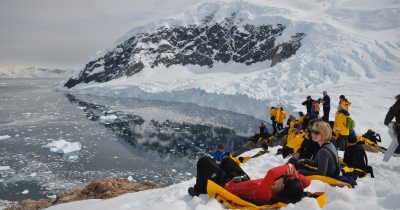
Antarctica is the only continent on Earth which is not owned by any country in the world. The frozen continent, which contains the majority of Earth’s freshwater, is regarded as a scientific preserve. Though it does not have a native population or permanent residents, the southernmost continent is a busy outpost for research scientists from several countries. Besides, Antarctic tourism has grown with at least 40,000 people visiting the region each year.
The Antarctic also includes island territories within the Antarctic Convergence. The islands of the Antarctic region are: South Orkney Islands, South Shetland Islands, South Georgia, and the South Sandwich Islands, all claimed by the United Kingdom; Peter I Island and Bouvet Island, claimed by Norway; Heard and McDonald islands, claimed by Australia; and Scott Island and the Balleny Islands, claimed by New Zealand.
The Antarctic Ice Sheet dominates the region. It is the largest single piece of ice on Earth. This ice sheet even extends beyond the continent when snow and ice are at their most extreme.
The ice surface dramatically grows in size from about 3 million square kilometers (1.2 million square miles) at the end of summer to about 19 million square kilometers (7.3 million square miles) by winter. Ice sheet growth mainly occurs at the coastal ice shelves, primarily the Ross Ice Shelf and the Ronne Ice Shelf. Ice shelves are floating sheets of ice that are connected to the continent. Glacial ice moves from the continent’s interior to these lower-elevation ice shelves at rates of 10 to 1,000 meters (33-32,808 feet) per year.
Antarctica has a number of mountain summits, including the Transantarctic Mountains, which divide the continent into eastern and western regions. A few of these summits reach altitudes of more than 4,500 meters (14,764 feet). The elevation of the Antarctic Ice Sheet itself is about 2,000 meters (6,562 feet) and reaches 4,000 meters (13,123 feet) above sea level near the center of the continent.
Credit : National Geographic
Picture Credit : Google




